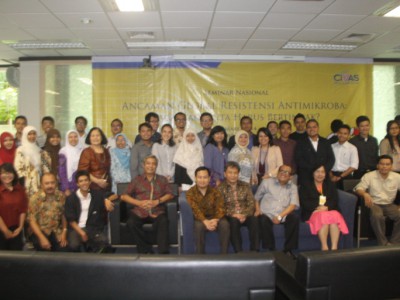The Economic Impact of Avian Influenza Outbreaks
Monday, 11 May 2015
Since December 2014, Avian Influenza (AI) has been raging in North America. In the US, it is recorded as the worst AI outbreak in history. The economic consequence is staggering because US is the largest poultry and poultry product exporter in the world.
GETTY IMAGES/CHINA PHOTOS – Workers collect virus from inoculated embryonated chickens eggs to produce Avian Influenza vaccines in Guandong Winsun Bio Pharmaceutical Co Ltd in early November 2005. China developed several inactive vaccines for H5N2 AI and combine it with inactive vaccines for H5N1 to control avian influenza.
Reuters reported, information on the first AI case in North America was obtained on December 2, 2014. In that incident, the Canadian Food Inspection Agency quarantined two turkey and chicken operations in British Columbia, Canada, after the detection of H5 Avian Influenza. Later, the virus subtype was confirmed to be H5N2.
The first AI outbreak in the US was confirmed on December 19, 2014. Avian Influenza subtype H5N9 was found in a mixed poultry farm in Douglas, Oregon. The first H5N2 case was confirmed on January 3, 2015, in a person’s backyard in Benton, Washington. Around 140 birds of mixed species were affected.
In commercial operations, H5N8 was first detected in a turkey operation in California, US, on January 23, 2015. Over 134,400 turkeys were affected. The largest outbreak in a commercial operation happened in Osceola, Iowa. More than 3.8 million layer chickens were culled because of H5N2.
Government officials and local veterinarians said transmission likely occurred through transportation of birds between farms or through the air and dust. USDA Chief Veterinary Officer John Clifford said the government tried its best to prevent AI viruses from spreading between farms.
However in Minnesota, as reported by Executive Director of the Minnesota Turkey Growers Association, Steve Olson, the disease spread because infected birds were not immediately destroyed, maintaining the virus. Minnesota is the largest turkey producing state in the country. John Glisson, Vice President of Research Programs from the U.S. Poultry & Egg Association, admitted the spread of AI shows that biosecurity has failed.
Avian influenza has infected 14 of 50 states in the US. AI emergencies were declared by Wisconsin, Minnesota and Iowa. On May 1, 2015, USDA reported 21.6 million birds in 114 commercial operations nationwide were affected by avian influenza. The largest outbreak occurred in Buena Vista, Iowa, affecting over 5.7 million layer chickens. All affected birds were destroyed.
On May 5, 2015, the US Government allocated 330 million USD for AI outbreak emergency funds.
This outbreak caused direct economic impact. Mexico, the largest market for US poultry and poultry products closed import from affected states on January 6, 2015. China, the largest importer of poultry and poultry products also banned birds, poultry products and eggs from the US on January 8, 2015. Saudi Arabia, the second largest chicken importer of stopped chicken meat and egg import from Ontario, Canada.
KOMPAS/FERGANATA INDRA RIATMOKO – A quail killed by avian influenza in Sedan hamlet, Sidorejo, village, Lendah, Kulon Progo, DI Yogyakarta several days ago. Over 3,900 quails on the premises died from avian influenza within 3 days.
Last year, US poultry and poultry product export reached 6 billion dollars. This year, revenue from export will definitely plummet because importing countries have stopped import from the US. On the macro scale, economic growth or gross domestic product (GDP) will decline because export is a component of GDP besides household consumption, government consumption, investment and import.
Affecting 28 countries
The first major avian influenza outbreak was known to emerge in China in 2008. Since then, AI has spread to numerous countries. The World Animal Health Organization (Office International des Epizooties/OIE) reported 28 affected countries in 2015, including the US and Canada. Indonesia was not included in the 2015 list. For Indonesia, the last entry was in 2011. At that time, 16 countries were affected by AI outbreaks.
During AI outbreaks, Indonesia also suffered some economic impact. An economic assessment was conducted by Rina Oktaviani, professor that the Department of Economic Sciences, Faculty of Economy and Management, Bogor Agricultural University, through her book “General Balance Economic Model, Theory and Application in Indonesia”, published by IPB Press in 2011. The title of the assessment was “The impact of Avian Influenza Outbreaks on Indonesia’s Economy: A General Balance Model Approach”.
In her assessment, Rina showed that avian influenza outbreaks caused GDP decline. The largest decline in GDP, around 0.95%, occurred when there was decline in the productivity of poultry and other sectors due to avian influenza issues. The decline was a factor of 0.78 percent decrease in household consumption and 1.43 percent decrease in export.
From her assessment, Rina recommended serious measures to prevent further spread of the virus. The measures should not be limited only to production aspects, such as vaccination and implementation of animal health standards in poultry operations, but also prevent consumers from going off poultry through education on the handling of poultry products.
Her recommendations are quite sound. Indonesia has learned from outbreaks in 2011. Now, the US and Canada have to deal with avian influenza in their poultry. So far the US, despite having advanced veterinary science and services, failed to prevent the virus from spreading. Avian influenza outbreaks are still reported in 2015.
On January 9, 2015, Kulon Progo District Marine, Fisheries and Livestock Services reported avian influenza H5N1 killing over 3,900 quails and scores of other poultry in Sidorejo village, Lendah subdistrict, Kulon Progo. The disease was confirmed by Wates Disease Investigation Center (Kompas, 10/1/2015).
Human victims
Recently, 3 people were infected and killed by H5N1 avian influenza (Kompas, 28/3/2015). N (40), an immigration officer at Kelapa Gading branch in North Jakarta, went to visit his parents in Bogor, West Java, on March 8, 2015. The parents owned several poultry species at home. During the visit, one owl was found dead. Nine days later, N’s child, M (2), suffered from high fever. M was admitted to Eka Hospital in Tangerang and later referred to Persahabatan Central General Hospital in East Jakarta.
Four days after M began treatment, N also suffered from similar clinical symptoms (March 21, 2015). N was treated at Husada Insani Hospital in Tangerang. After four days of treatment, N died on March 24, 2015. Two days later, M died on March 26, 2015. One of N’s in-law who lives near the parent’s house in Bogor also died.
This case caused grave concern because it occurred not far from the country’s capital, Jakarta. Imagine the national and international fallout if this case spread in Jakarta. Avian influenza expert from Airlangga University in Surbaya, East Java, Chairul Anwar Nidom, said avian influenza H5N1 is still a public threat in Indonesia. However, for the last 10 years since this virus first spread in Indonesia, disease surveillance is largely ineffective. This is concerning because surveillance is needed to map the disease, test the virulence and model disease transmission, so further occurrences could be prevented.
More importantly, it’s time for the public to treat avian influenza cases seriously. It’s not difficult. Immediately report all cases of poultry death to your local livestock services. If you suffer high fever after coming in contact with dead birds, immediately seek medical attention to your local physician.
(Author: Subur Tjahjono)
Source: KOMPAS













